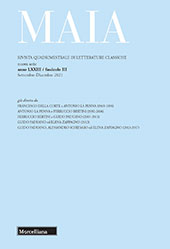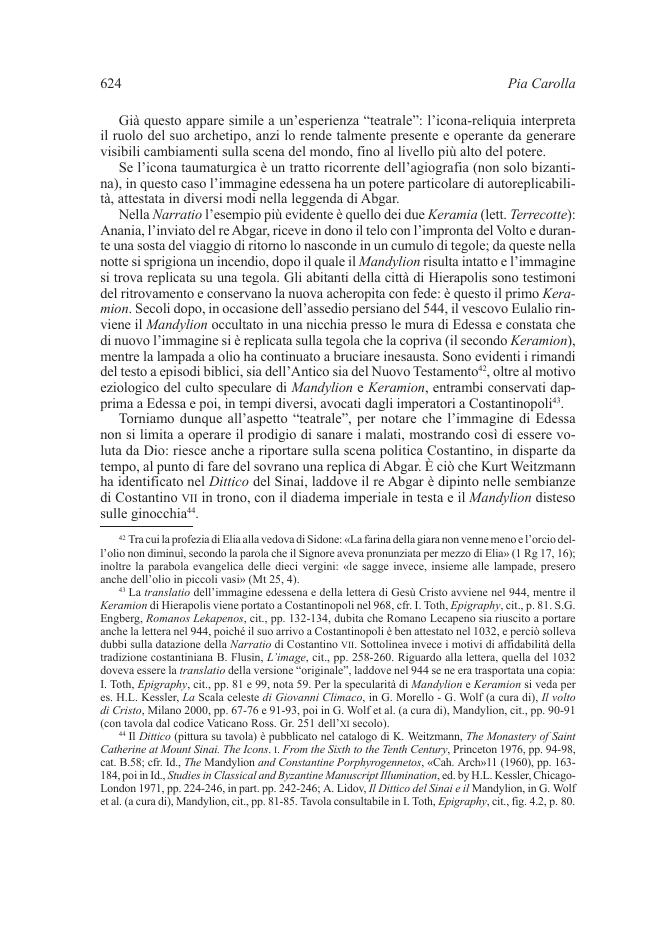2021 - Morcelliana
Article
Digital Version
Download | Copy/paste | Printing
L'immagine di Edessa nella narratio attribuita a Costantino VII Porfirogenito
P. 616-631
- Revered as acheiropoietos (i.e., not made by human hands), the image of Christ from Edessa was a sacred cloth with Jesus' face. Preserved in the city of Edessa, it was conquered by the Byzantine army under the emperor Romanos I Lekapenos and brought to Constantinople on 16 th August 944. The precious relic, later called Mandylion (tissue or towel), was credited with the power to put onto the throne the emperor Constantine VII Porphyrogennetos (945-959). This paper sheds light on some performing, “theatrical” and even histrionic aspects of the literary sources from the 10th Century, especially the Narratio de imagine Edessena (i.e., the Story about the image of Edessa, BHG 794-796) attributed to the emperor Constantine himself, and the Antapodosis by Liutprand of Cremona.
- A later version of the story can be found in Genoa, Italy: the 14th-c. frame of the Mandylion, today in the church of St. Bartholomew of the Armenians, parallels the 10th Century. tradition, including some relevant coups de théâtre. [Publisher's text]
-
Information
ISSN: 2611-805X
-
In this issue
- Fra passato e presente : strumenti visuali e immagini nel processo
- Actors and theatre in Aristotle's rhetoric and beyond
- Iuris fabulam agere : simbolismo e ritualità in Roma antica fra azione processuale e azione teatrale
- Oratori finitimus comoedus : modelli di gestualità nell'oratoria antica
- Evidenza e colore teatrale nelle Verrine di Cicerone
- Ante oculos : elementi di cultura visuale nell'eloquenza ciceroniana
- Un esempio di actio al femminile : la retorica (populista) di Fulvia
- Dimissuri eum sumus sine spectaculo? (Aug. in Ps 39, 9) : Agostino e il teatro della predicazione
- Oggetti di scena e interazione con la performance oratoria nell'eloquenza reale e declamatoria dell'età imperiale : con un piccolo esempio iconografico
- L'immagine di Edessa nella narratio attribuita a Costantino VII Porfirogenito
- La recitatio nella Poetria Nova : prime indagini sull'antica esegesi italiana
- A note on Sophocles, Oedipus Coloneus 1054-1055
- Virgilio nel circolo di Messalla : Ciris, Catalepton 9 e la letteratura di età tiberiana
- Excepit Seleucus fabulae partem (Petron. 42,1-2)
- Hieronymus Sallustianus : Iterum. Jerome, epist. 30, 13, 2.
- Il capraio innamorato dell' idillio III di Teocrito e di Un sogno tra i flutti di Al. Papadiamandis : analogie e differenze strutturali di un paradigma bucolico
- Recensioni
- Schede



